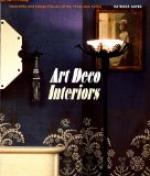A new note has been struck of late in the arranging of bizarre, delightful rooms which on entering we pronounce “very amusing.”
Original they certainly are, in colour combinations, tropical in the impression they make,—or should we say Oriental?
They have come to us via Russia, Bakst, Munich and Martine of Paris. Like Rheinhardt’s staging of “Sumurun,” because these blazing interiors strike us at an unaccustomed angle, some are merely astonished, others charmed as well. There are temperaments ideally set in these interiors, and there are houses where they are in place. We cannot regard them as epoch-making, but granted that there is no attempt to conform to two of the rules for furnishing,—appropriateness and practicality, the results are refreshingly new and entertaining. This is one of the instances where exaggeration has served as a healthy antidote to the tendency toward extreme dinginess rampant about ten years ago, resulting from an obsession to antique everything. The reaction from this, a flaming rainbow of colours, struck a blow to the artistic sense, drew attention back to the value of colour and started the creative impulse along the line of a happy medium.
Whether it be a furnished porch, personal suite (as bedroom, boudoir and bath), a family living-room, dining-room, formal reception-room, or period ballroom, never allow members of your household or servants to destroy the effect you have achieved with careful thought and outlay of money, by ruthlessly moving chairs and tables from one room to another. Keep your wicker furniture on the porch, for which it was intended. If it strays into the adjacent living-room, done in quite another scheme, it will absolutely thwart your efforts at harmony, while your porch-room done in wicker and gay chintzes, striped awnings and geranium rail-boxes, cries out against the intrusion of a chair dragged out from the house. Remember that should you intend using your period ballroom from time to time as an audience room for concerts and lectures, you must provide a complete equipment of small, very light (so as to be quickly moved) chairs, in your “period,” as a necessary part of your decoration.
The current idea that a distinguished room remains distinguished because costly tapestries and old masters hang on its walls, even when the floor is strewn with vulgar, hired chairs, is an absurd mistake. Each room from kitchen to ballroom is a stage “set,”—a harmonious background for certain scenes in life’s drama. It is the man or woman who grasps this principle of a distinguished home who can create an interior which endures, one which will hold its own despite the ebb and flow of fashion. Imposing dimensions and great outlay of money do not necessarily imply distinction, a quality depending upon unerring good taste in the minutest details, one which may be achieved equally in a stately mansion, in a city flat, or in a cottage by the sea.




